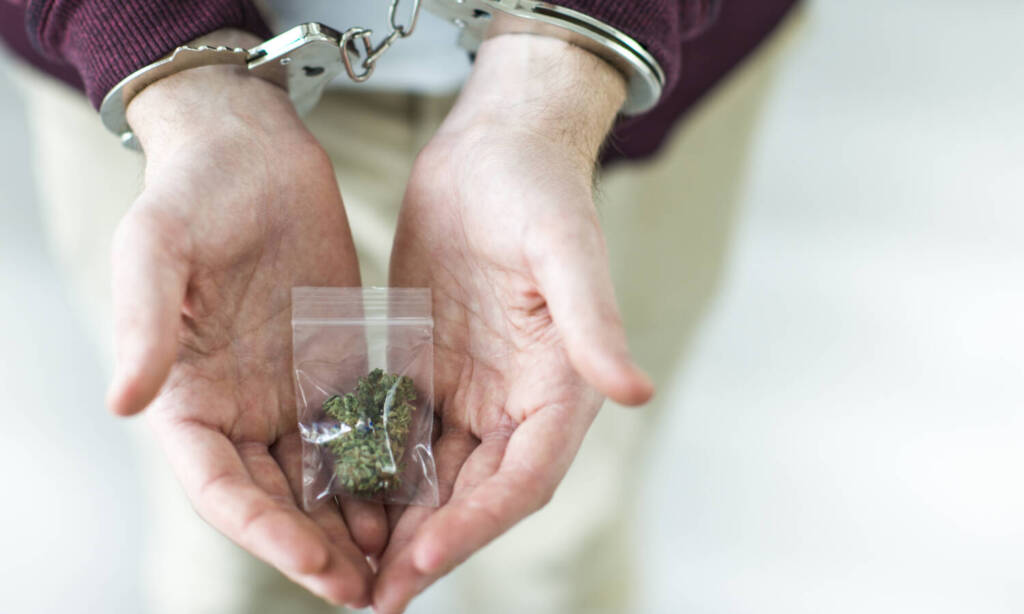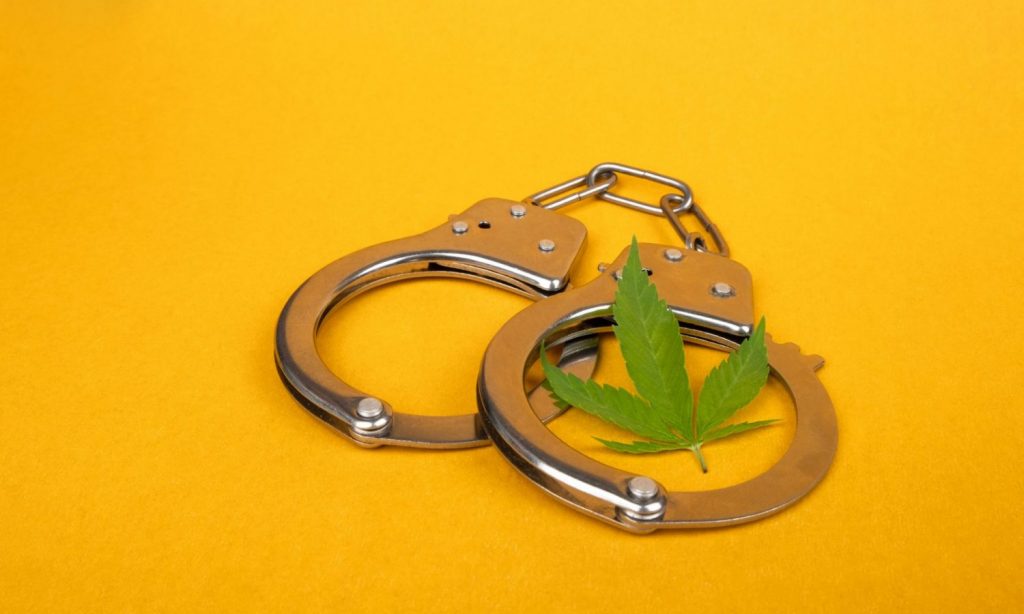
How the Controlled Substance Act created a new form of modern day slavery
This article originally appeared on Cannabis.net and has been republished with permission.
For those who have read my work over the past few years, I have always taken the position that bans are terrible government policies. I mean, if it didn’t work for God in the Garden of Eden, why do we think it would work for man?
Nonetheless, it’s something we’re still struggling with today, despite the fact that at the time of writing, 37 states have legalized cannabis in some form.
Photo by RODNAE Productions from Pexels
However, I have recently come to the conclusion that the Controlled Substance Act is not just a policy of drug prohibition, but rather the control and enslavement of people. This is due to a little thing known as the 13th Amendment, which clearly states:
Part 1
No slavery or involuntary servitude, except as punishment for crimes of which the party has been duly convicted, shall exist in the United States or any place within its jurisdiction.
Perhaps the CSA was not originally designed as a means of turning free citizens into slaves. This may not have been its original purpose, but in practice it was exactly what it had become. Currently, the Controlled Substances Act acts as a means for the pharmaceutical industry to maintain a monopoly on all drugs.
However, the fact that drug prohibition essentially turns all drug users into criminals means that policies designed to “protect people from drugs” are actually an excuse to enslave people — at least that makes legal and constitutional sense.
If we look at the history of the imprisonment, it seems to confirm the idea. According to Drug Policy Facts:
Forty-six percent of prisoners sentenced to federal prison were serving time for a drug offense as of September 30, 2019, the most recent date for which such data are available (more than 99% for drug trafficking).
This relates to federal prison statistics. When it comes to state prison statistics:
The US Department of Justice’s Bureau of Justice Statistics reports that as of the end of 2018, 1,249,700 people were convicted in US state prisons, of which 176,300 (14.1%) had a drug charge as the most serious offense: 46,500 for drug possession (3.7%) and 129,900 for “other” drug offenses, including manufacture and sale (10.4%).
 Photo by Richard Ross/Getty Images
Photo by Richard Ross/Getty Images
These people, some of them “drug dealers,” meaning they were legally enslaved under the US Constitution. Surely some of you think that drug dealers should be in prison. Except that according to the federal government, drug trafficking can be anything but simple possession, as CriminalDefenseLawyer.com explains:
In federal law, the term “human trafficking” has a specific meaning that differs materially from the usual usage of the term. A person commits the crime of drug trafficking when he or she manufactures, distributes or supplies with intent to manufacture, distribute, supply or possess any quantity of a prohibited narcotic.
In other words, under federal law enforcement guidelines, the term “human trafficking” refers to situations that many people might consider property.
(21 USC Section 841)
Why don’t they call it mere possession? Easy. People would be outraged at a 15 year sentence for mere possession, but call it drug dealing and these bastards can rot in a cell! Speech is a powerful tool when used with malice.
“But prisoners are not slaves!” you might say. While this is technically correct, there is no legal mechanism by which you can force an inmate to work; Prisons can force prisoners to work hourly for pennies.
From Don Williams, Quora:
Prisoners are not “forced to work”, they are given an incentive to go to work.
If you go to jail (in Arkansas anyway), you’re considered Class II. You get a job in the “Hoe Squad” and you’re expected to do that job for 2 months before you get Class I.
If you choose not to go to work, you will be placed in Class III and given some restrictions. no phone or shop.
If you continue to stay away from work, you’ll be downgraded to Class IV, where you’ll get no privileges at all; no shop, phone or visits. They also don’t generate good time at Class IV.
So, if you want to cut your time (or you’re serving a life sentence with no family to visit or put money on your books), then not going to work is no problem.
Most inmates go to work so they can get out of prison sooner rather than later.
Going to work also has the benefit of making time pass faster because you are constantly busy. Just sitting on your ass in the barracks will waste your time. Well, going to work makes prison life a little bit easier to deal with.
 Photo by FatCamera/Getty Images
Photo by FatCamera/Getty Images
Of course, from a prisoner’s perspective, work definitely has its perks, as Don explains. But what does work mean? In Arkansas, that would be a minimum of $0.0 an hour and a maximum of $0.0 a day, according to PrisonPolicy.org
The same letter highlighted the following:
The average daily minimum wage paid to incarcerated workers for non-industrial prison jobs is now 86 cents, compared to 93 cents in 2001. The average maximum daily wage for the same prison jobs has fallen even more, from $4.73 in 2001 to $3.45 today.
This means that, despite the favorable incentives for prisoners to work, the government and, in many cases, private institutions use this labor force to produce goods that they sell to government agencies. In fact, according to the Corporate Accountability Lab, there are over 4100 companies that benefit from mass incarceration.
RELATED: Biden explores clemency for nonviolent federal drug inmates, advocates want all pot prisoners released
Around 63,000 inmates produce goods for external sale. Some of these goods are destined for government agencies, others for the private market. Jobs in the prison industry range from farm labor and manufacturing to call center and distribution services. Every state except Alaska has a federal prison industry initiative, and the federal government operates a separate program, Federal Prison Industries (trade name UNICOR).
And here it all comes together, how many prisoners are incited to work for pennies a day on charges of drug trafficking, aka possession? While this system is not technically or legally “slavery,” it is by all ethical standards.
 Photo by Roman Budnyi/Getty Images
Photo by Roman Budnyi/Getty Images
Therefore, I conclude that the Controlled Substance Act – a document that prohibits people from “carrying a substance” that they would consume while exercising their body’s full autonomy – is a legal mechanism to protect the average Turn Jane and Joe into the state or federally owned slaves.
RELATED: Cannabis Justice and the Promise of Reparations for the War on Drugs
The only sane thing we can do as a civilized society is to scrap this slave trade treaty once and for all and reconsider how we deal with the relationship between humans and drugs. It’s been more than 50 years of the Nixon-inspired War on Drugs in which a strict prohibition line has dictated all policy decisions.
Maybe it’s time to accept that We the People likes to get a little crooked every now and then, and that’s totally okay. Controlling drugs is far more effective than banning them. And if you taxed recreational drug use like any other recreational substance, the problem would essentially fund the only solution that ever worked — education, harm reduction, supply chain management, purity controls.
This article originally appeared on Cannabis.net and has been republished with permission.

Post a comment: